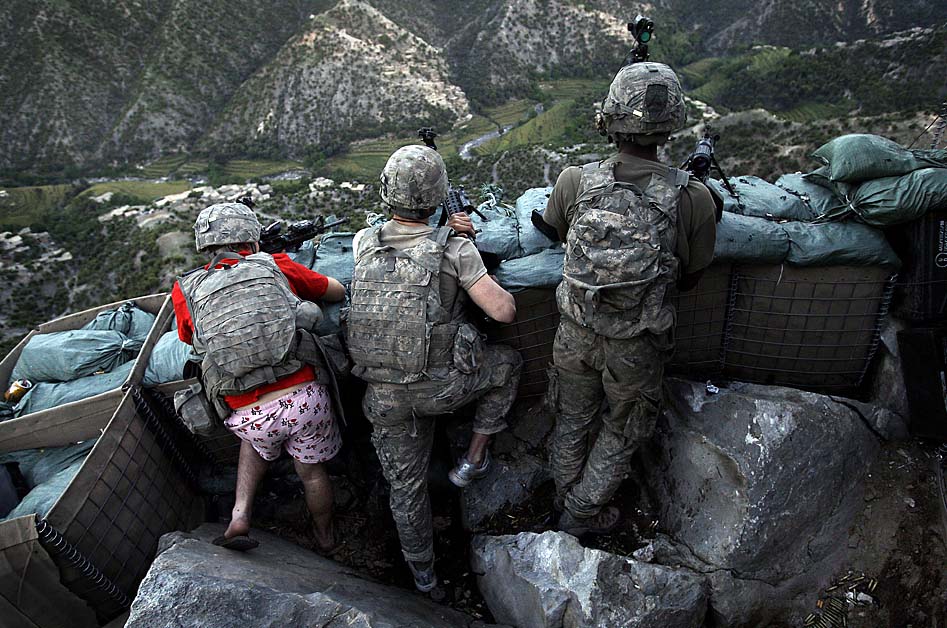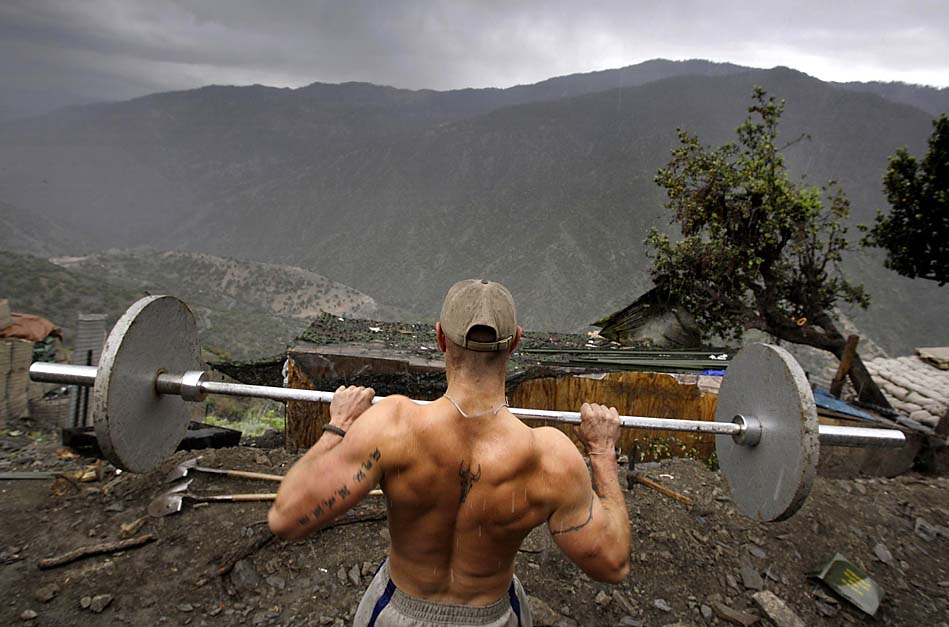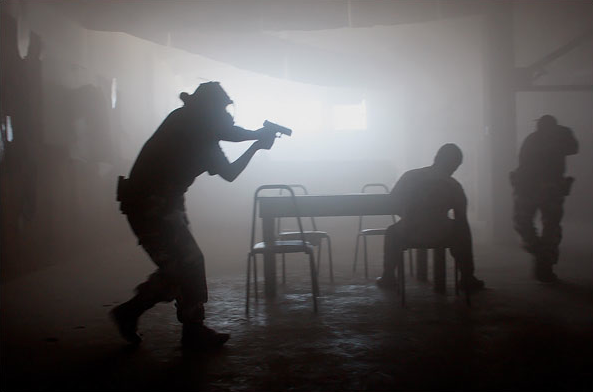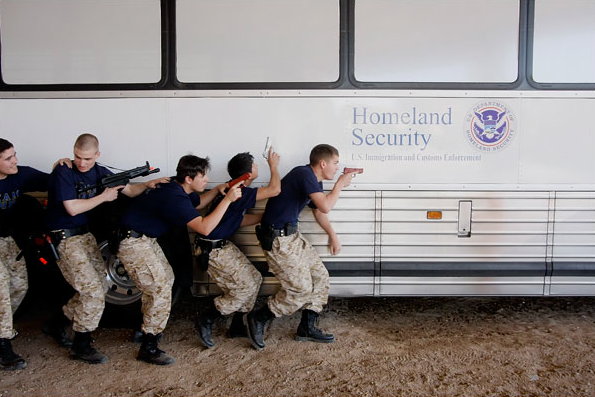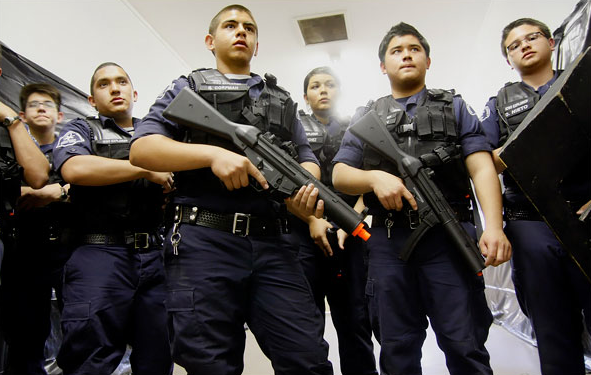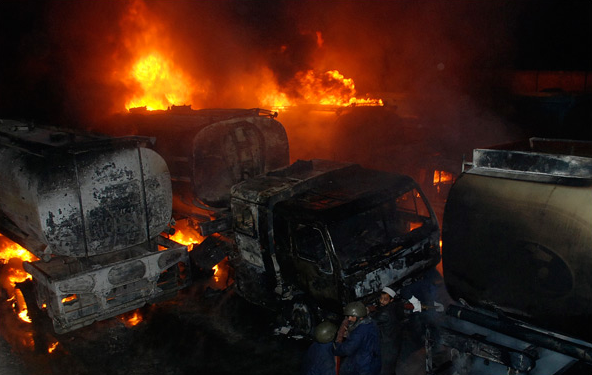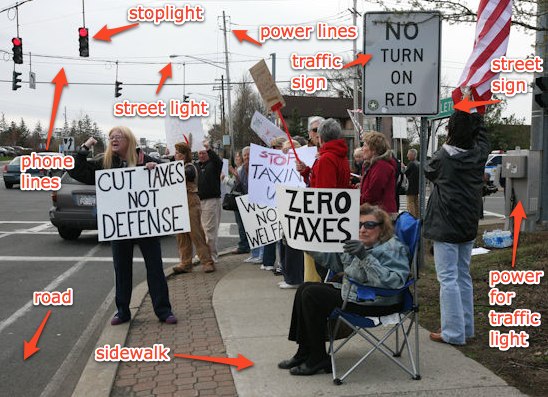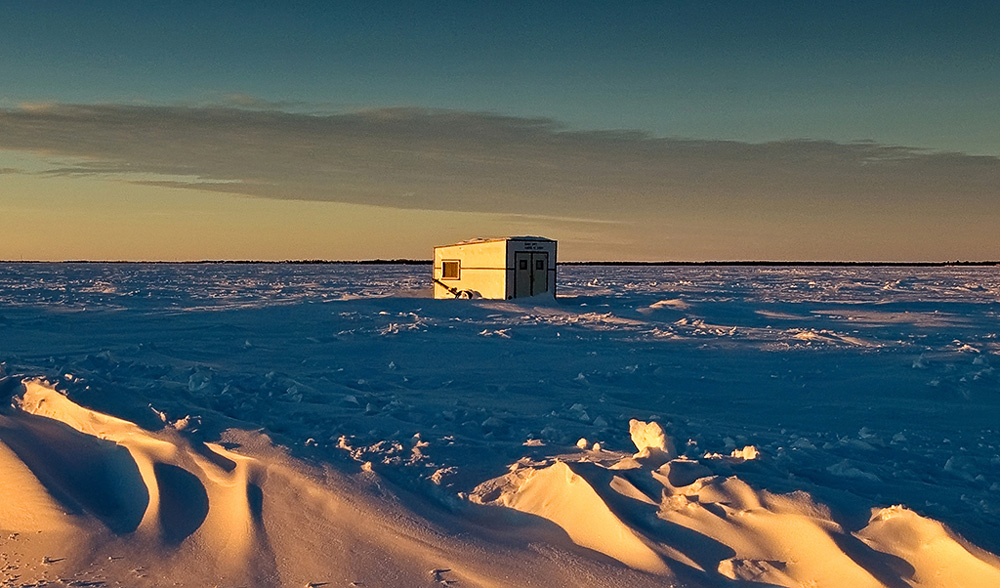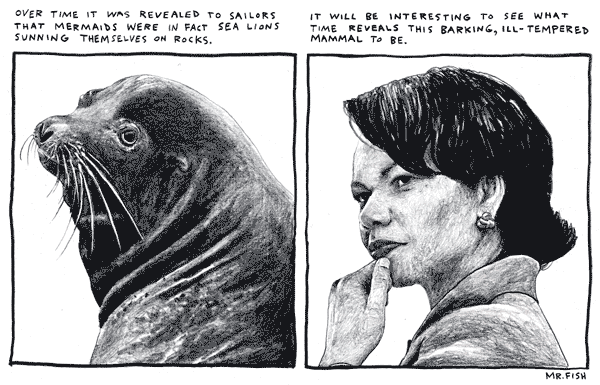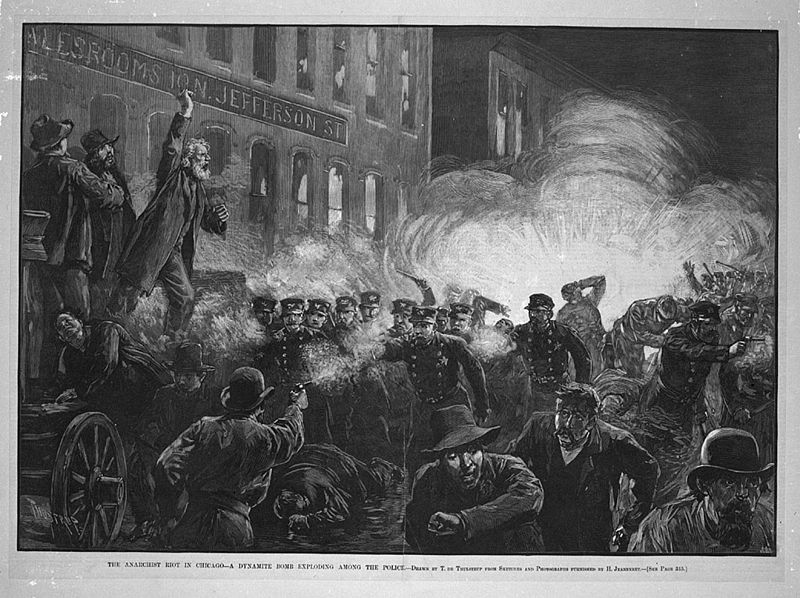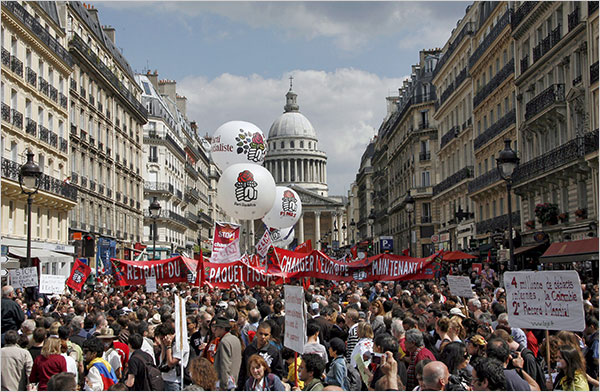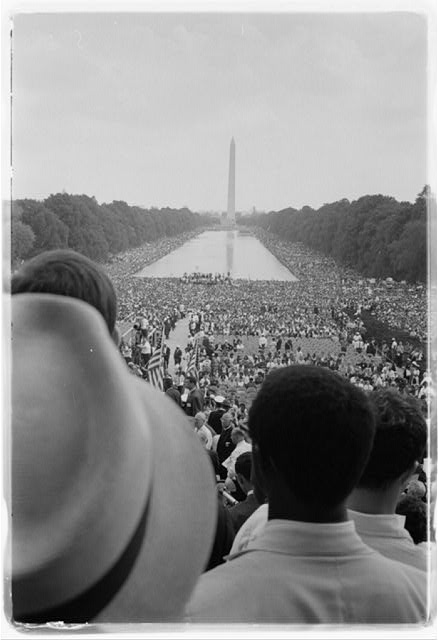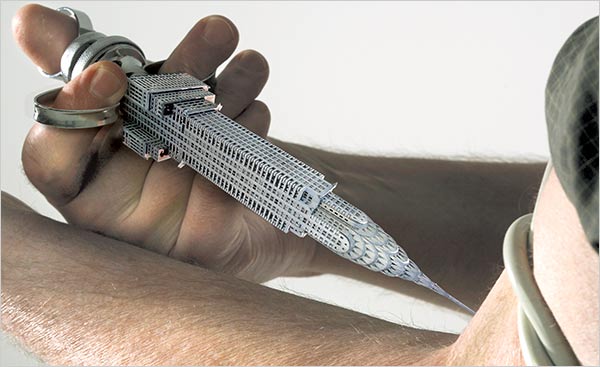By guest correspondent David Campbell
Embedding photojournalists with combat units was one of the military’s greatest victories in the Iraq war. By narrowing the focus in time and space to the unit they were with, the images produced put brave soldiers front and center, with both context and victims out of range. Now, with the Obama administration’s “Af-Pak” strategy being questioned, we are being offered similar visual cues from Afghanistan.
Three soldiers peering into a remote valley, rifles at the ready, the enemy seemingly elusive. High tech weaponry is readied against the elements. This is a war machine looking for a reason, certain a threat is out there but unsure of its form. There’s even a moment of pathos, with the man on the left in his pink boxers and exposed legs lining up with his comrades. Then there is the second photo, shot from behind in the same place, but showing a strongman taking time out for a gym session. One shows a vulnerable body, the other a muscular physique, but in each case the American soldier is the subject of the photograph.
What unites these pictures is their location – the Korengal Valley in northeastern Afghanistan. The embedding process is taking photographers and reporters to this location above all others, and photographers have been prominent in the coverage of US operations there. Balazs Gardi and Tim Hetherington travelled there in 2007, John Moore spent time there in November 2008, producing both stills and a multimedia piece, and Adam Dean and Tyler Hicks have filed stories from an April 2009 embed. (See background to the Hicks’ story here.)
Although the visual skills of these practitioners are not in doubt, the stories they have produced are remarkably similar in both content and approach. US forces are the locus of the narrative and combat scenes are repeatedly pictured. The local community is lalrgely unseen, except for when they encounter the Americans, and never heard. They are rendered as part of an inhospitable environment in which civilians are hard to distinguish from ‘the enemy’.
The effect of concentrating on one location and one side has been to badly limit our understanding of the strategic dilemma that is Afghanistan. The photographers might want to do otherwise but the embedding process is designed to produce this constraint. Its success can be judged by the way these stories effectively structure the visibility of the war in a way that foregrounds American military interests.
How we judge the photographers’ responsibility here is difficult. Logistically, being embedded is the only feasible way to cover some frontline locations. Without it we might not see anything. But the consequence of embedding is the production of a visual landscape that too easily fits with the idea that more troops or heavier fighting could lead to victory. This political effect was part of Adam Broomberg and Oliver Chanarin’s critique of Tim Hetherington’s 2007 World Press Photo-winning image of an American soldier in the Korengal. (Hetherington responded with a statement about photojournalism’s continuing political significance, which I have considered here).
Picturing the Af-Pak war comprehensively and in context is a major photographic challenge. It cannot be easily disentangled from the politics of the war. We are stuck with the consequences of the Bush-Blair military intervention, but there is no simple military solution in Afghanistan that will guarantee security. Yet, as much as it might be wished, withdrawing international forces from Afghanistan is unlikely to be helpful in the short-term.
In this context, photography has its work cut out for it. The stories most effective at addressing the broader issues to date have been multimedia presentations (see John D McHugh’s series Six Months in Afghanistan, especially the film “Combat Post”), and more work of this kind is urgently needed if the human and political dimensions of the struggle for security in Afghanistan and Pakistan are going to be better understood.
Photograph by David Guttenfelder/Associated Press.
